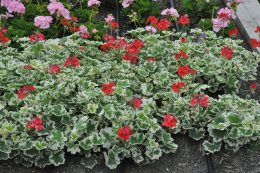April showers bring May flowers! Yes this is true but it also brings other unwanted plants as well. With rain and/or irrigation we take the good with the bad. I have already seen this particular weed coming up for some time now this spring. Yellow nutsedge is one of these unwanted weeds!
Yellow nutsedge likes soil that doesn’t drain well like clay and moisture. In wet years or overly irrigated lawns it will be more common. It kind of looks like a grass, it is a sedge. Unlike grasses, sedges have triangular stems, and the leaves are three-ranked instead of two-ranked, which means the leaves come off the stems in three different directions. Yellow nutsedge is pale green to yellow and grows rapidly in the spring and early summer. Because of this rapid shoot growth, it sticks up above the rest of the lawn only a few days after mowing. This weed is a good indicator of poor drainage, but it can be introduced into well-drained sites through contaminated topsoil or nursery stock. As with many weeds, nutsedge is less competitive in a dense, healthy lawn than in an open, poor lawn.
Nutsedge is difficult to control culturally because it produces numerous tubers that give rise to new plants. Pulling nutsedge will increase the number of plants because dormant tubers are activated. However, it is possible to control nuts edge by pulling, but you must be persistent. If you are, eventually the nutsedge will die out. If you were going to treat with an herbicide, it would be better to leave the nutsedge plants undisturbed so the herbicide can be maximally translocated to the roots, rhizomes, and tubers.
Several herbicides are available for nutsedge control. SedgeHammer, which used to be called Manage, is the most effective and safe for most turfgrasses. It is also the most expensive, but if an infestation is not too severe, one application should take care of the problem. The SedgeHammer label says to apply it after nutsedge has reached the three- to eight-leaf stage. Waiting until this
growth stage apparently results in improved translocation of the active ingredient to the underground tubers and rhizomes. However, research has shown that the application should go down by June 21. If the initial spray is after June 21, mature daughter tubers may be stimulated to grow. Small packages of SedgeHammer are available to homeowners. Using a non-ionic surfactant with the SedgeHammer will give better control.

